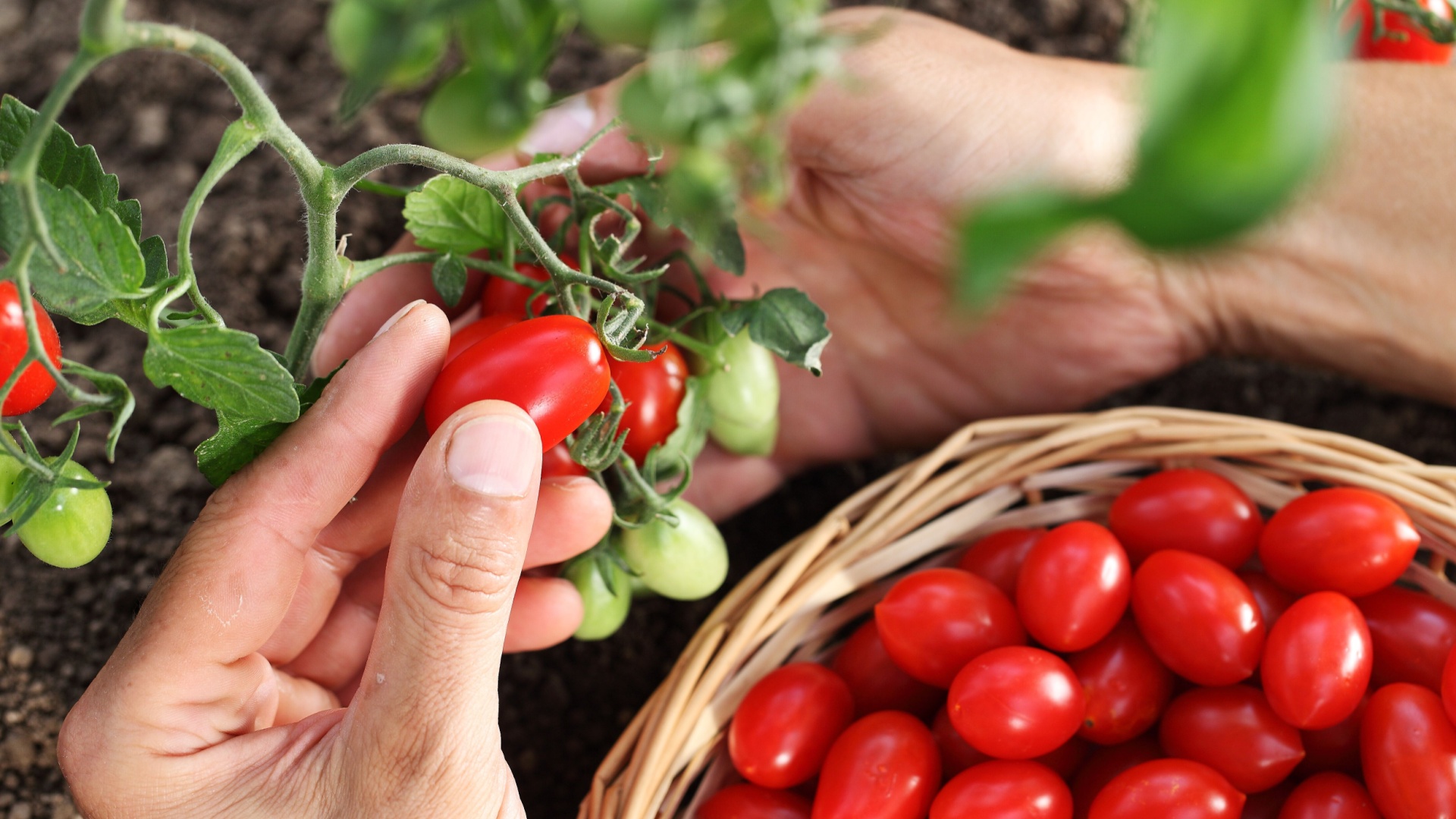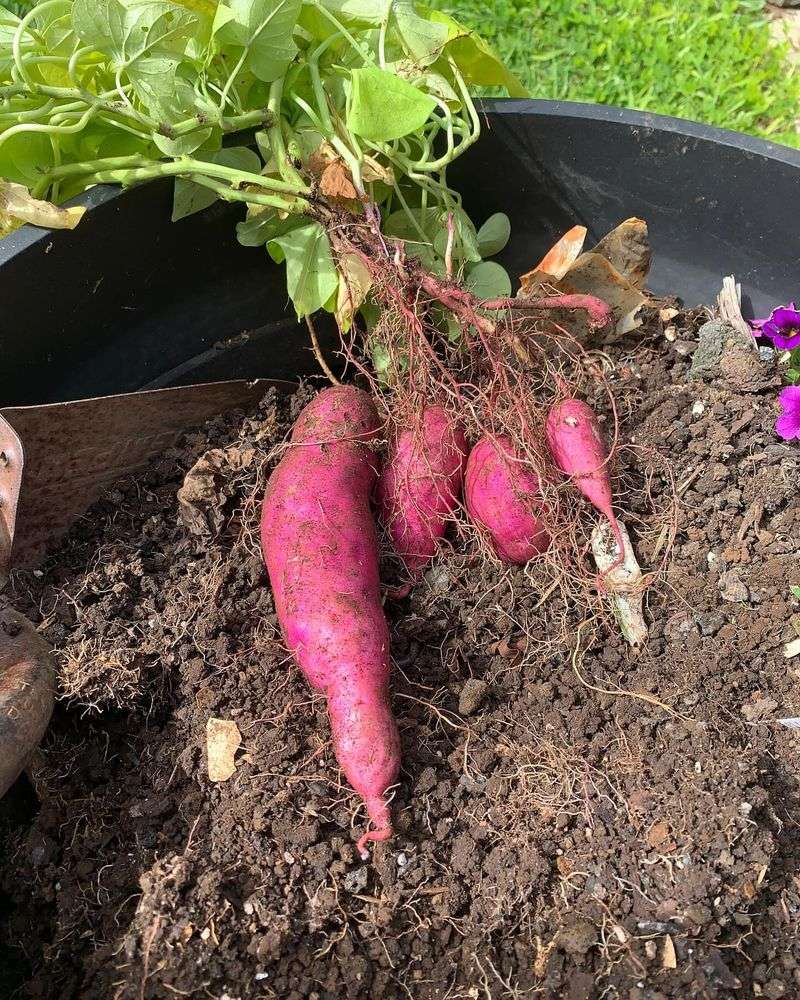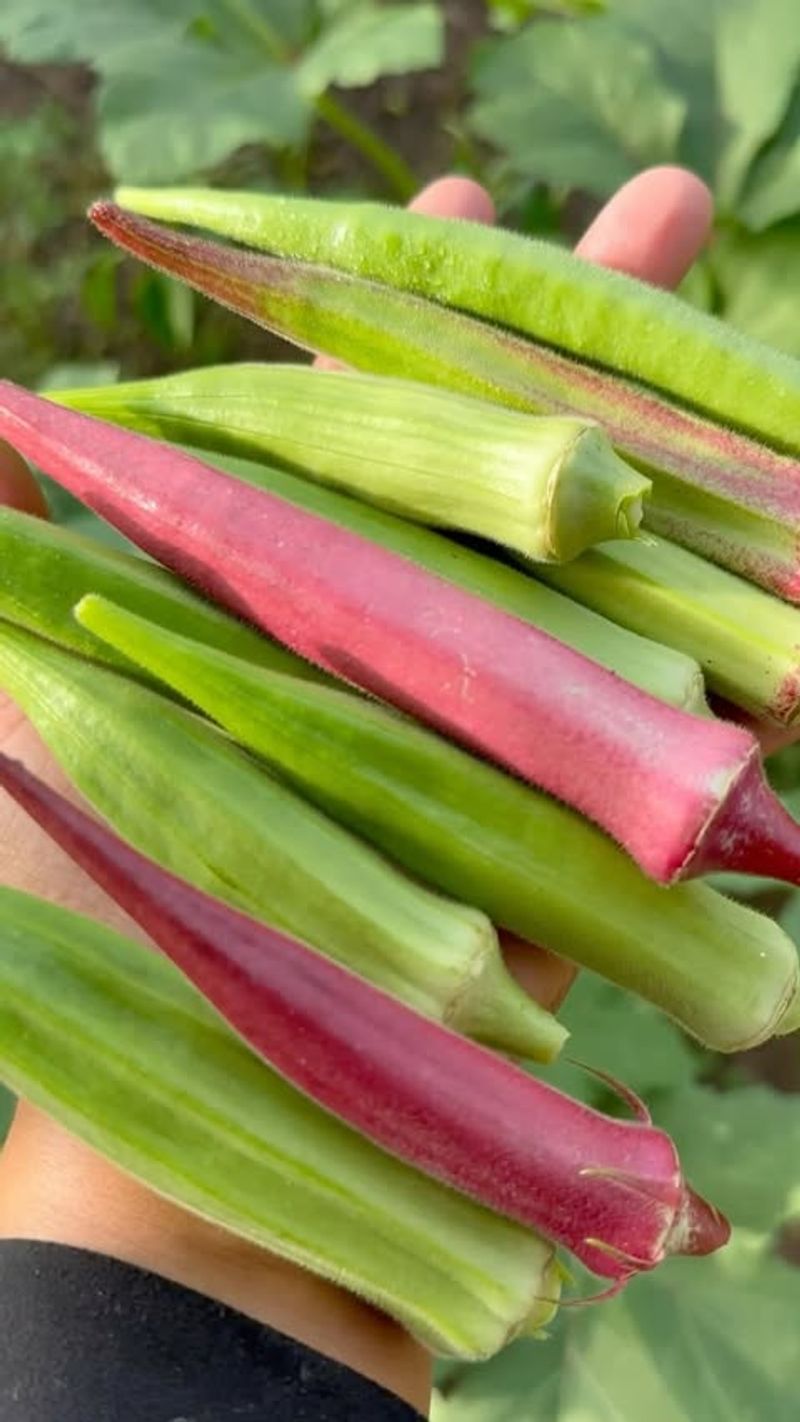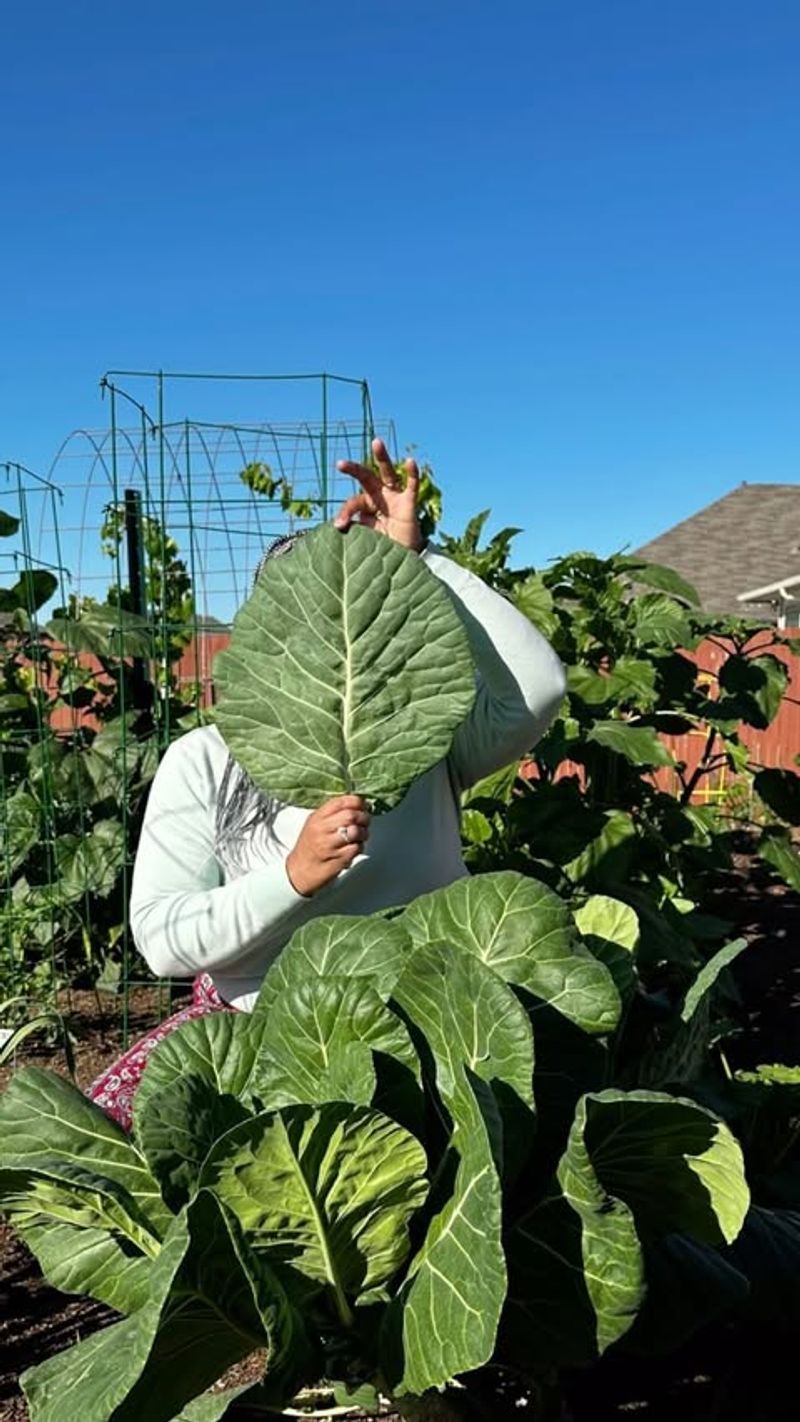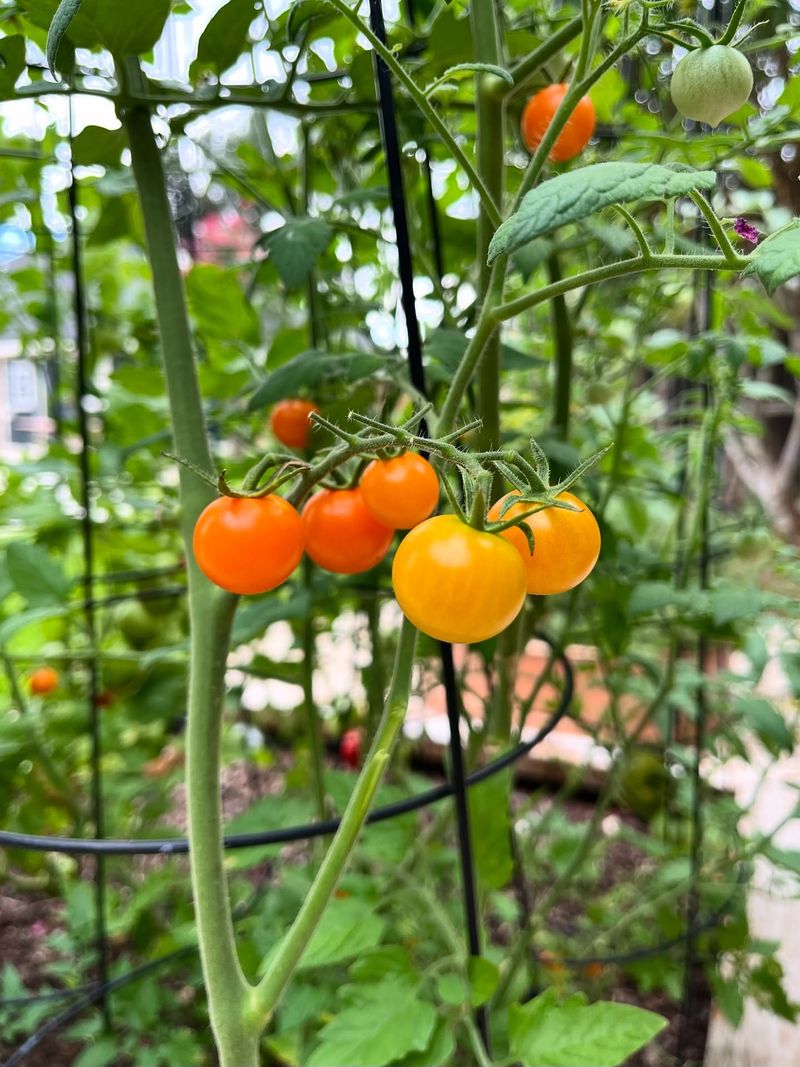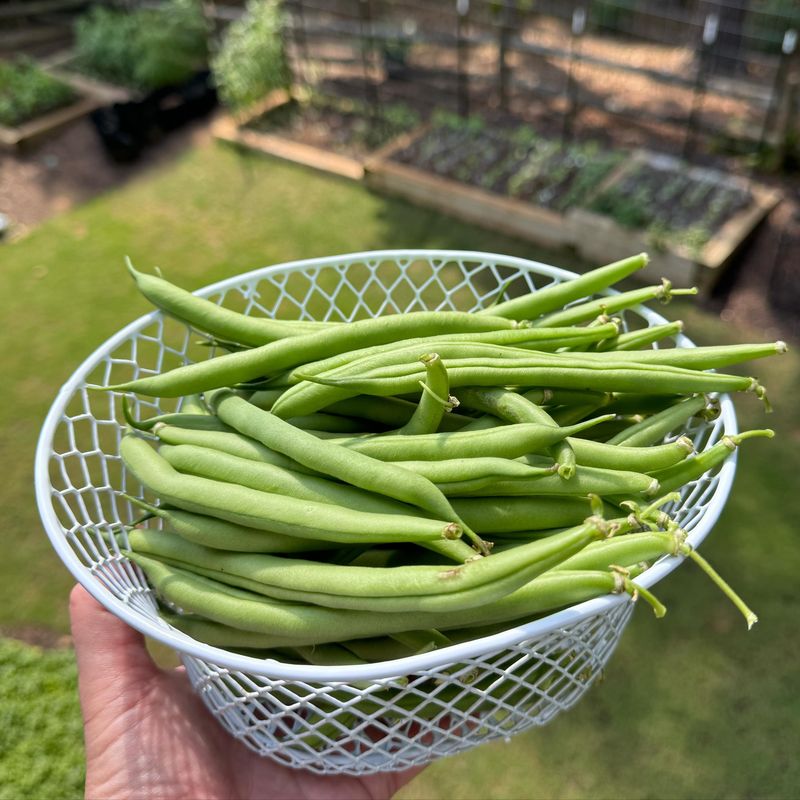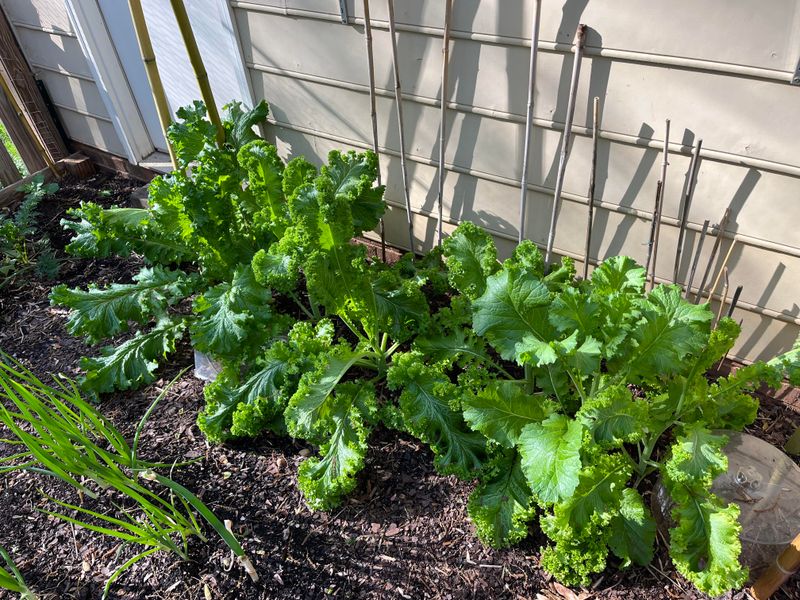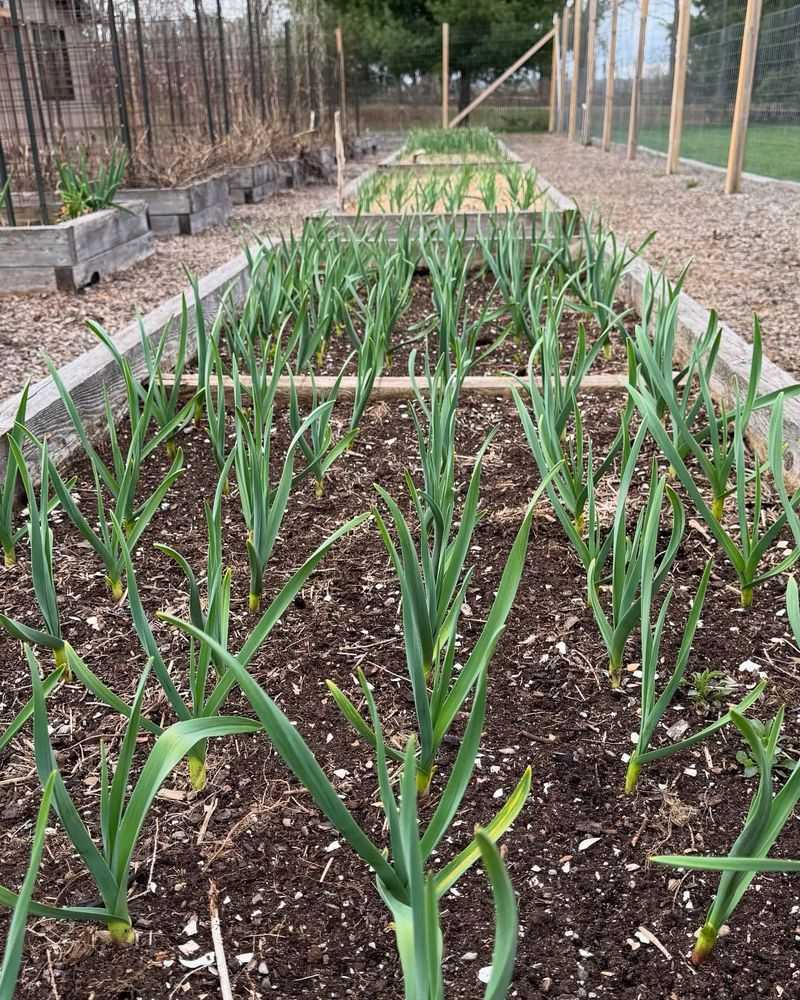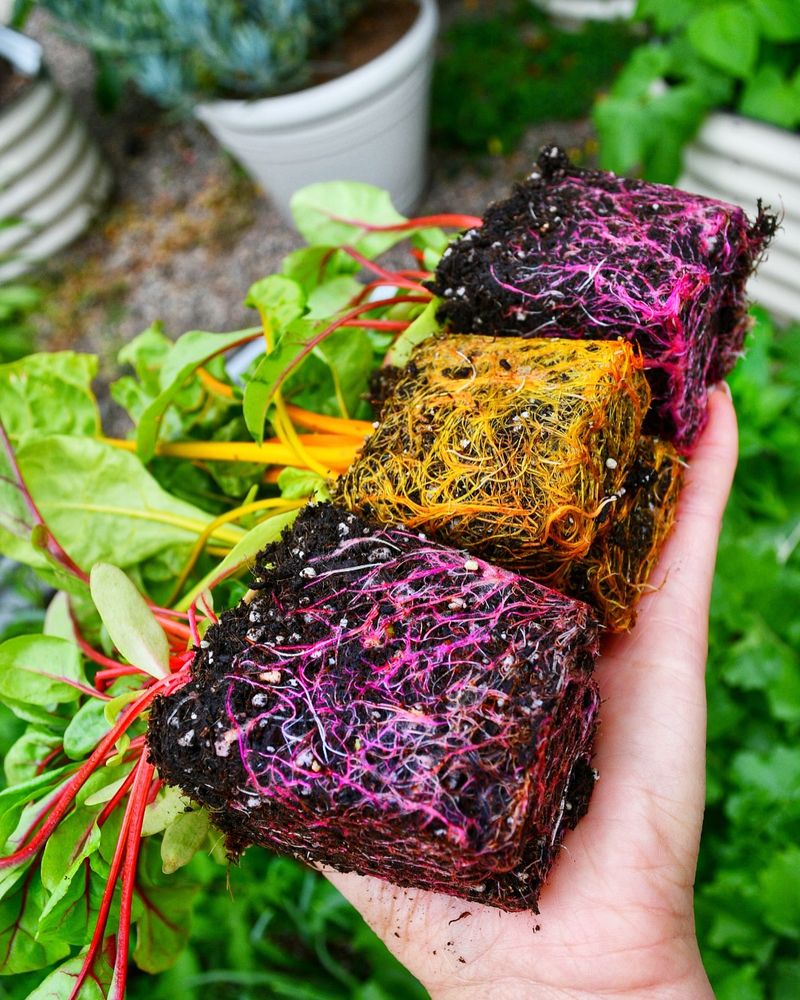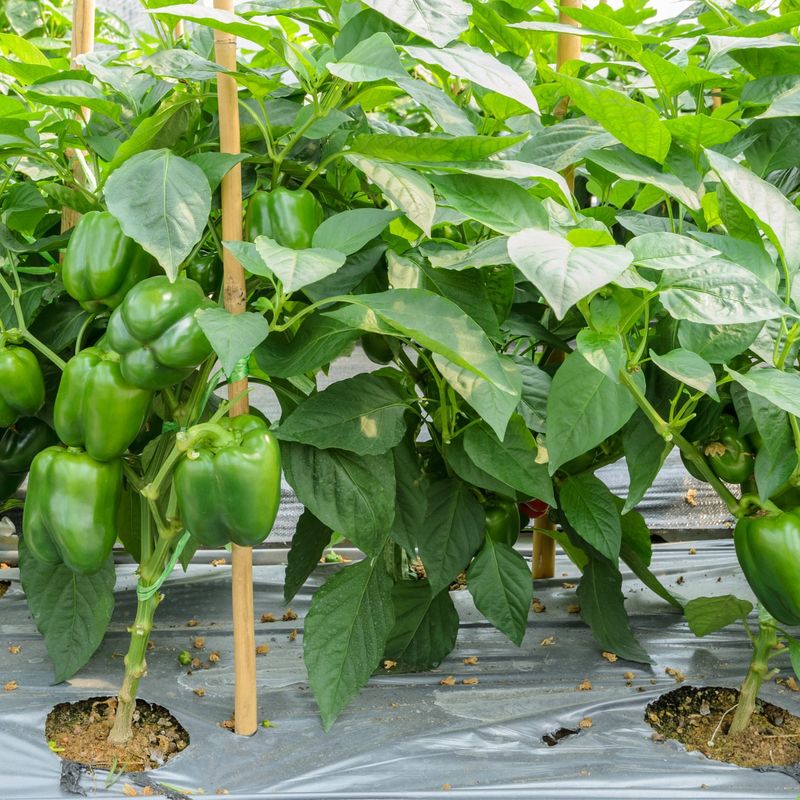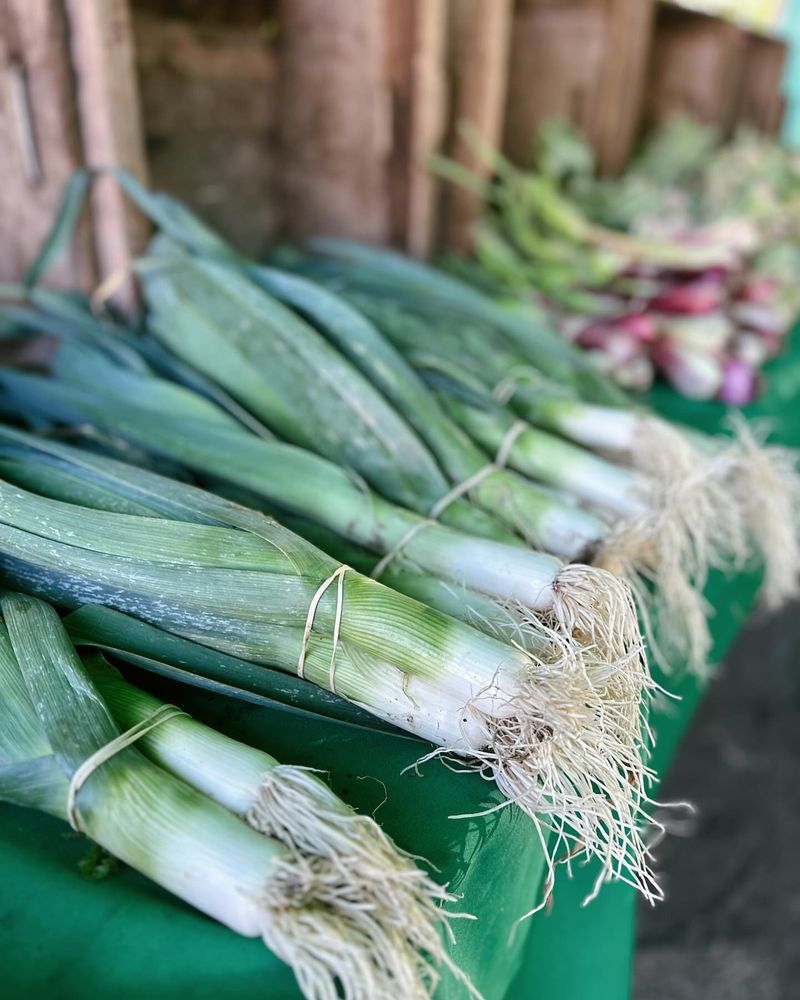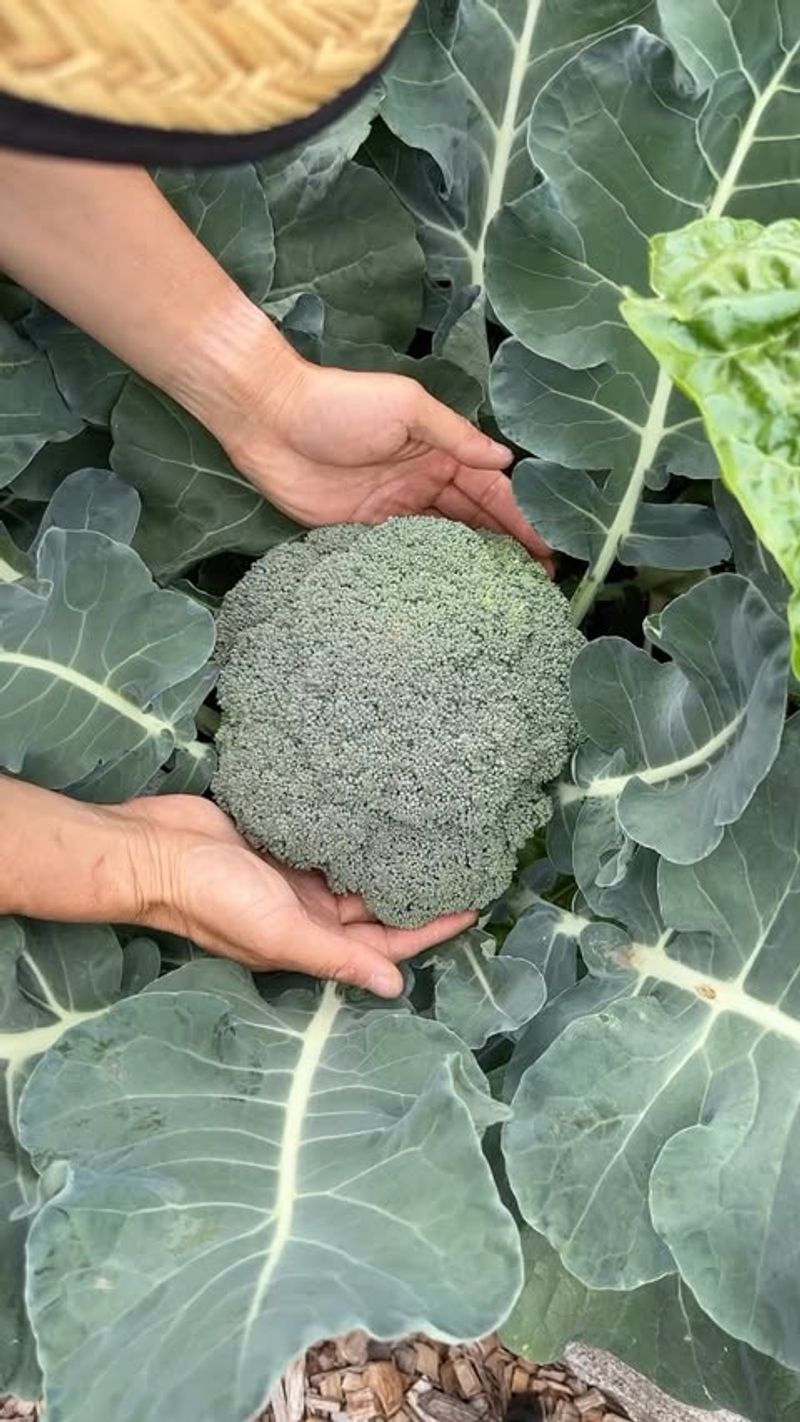Tennessee gardeners know the struggle with our famous red clay soil. Heavy and dense when wet, hard as a brick when dry – it’s not exactly plant paradise! But don’t give up on your garden dreams.
Many vegetables actually thrive in our challenging soil conditions, especially when you add a bit of compost to improve drainage. Ready to discover which veggies will flourish in your Tennessee garden?
1. Sweet Potatoes
Sprawling vines of sweet potatoes practically celebrate in Tennessee’s red clay! Their extensive root systems break through tough soil while producing delicious tubers below ground. The warmer temperatures of Tennessee summers help these vitamin-packed powerhouses develop their signature sweetness.
Add a small amount of sand when planting to improve drainage slightly. Beauregard and Georgia Jet varieties perform exceptionally well in our clay conditions, ready for harvest just in time for fall comfort food season.
2. Okra
Tall and proud, okra plants laugh at Tennessee’s summer heat and clay soil challenges. Native to Africa, these relatives of hibiscus produce beautiful cream-colored flowers before developing their distinctive ribbed pods.
The deep taproot of okra penetrates clay effectively, accessing nutrients other plants can’t reach. For best results, harvest pods when they’re young (2-3 inches) before they become tough. Clemson Spineless and Emerald varieties thrive particularly well in our challenging soil conditions.
3. Collard Greens
Southern traditions shine through with collard greens that actually prefer our dense soil structure. Their strong root systems anchor well in clay while their broad leaves capture maximum sunlight for growth.
Collards become sweeter after light frost, making them perfect for fall and winter harvesting in Tennessee’s climate. Sow seeds directly in clay soil amended with a bit of compost. Champion and Georgia varieties consistently produce abundant harvests even when other greens struggle.
4. Cherry Tomatoes
Bursting with flavor, cherry tomatoes adapt surprisingly well to clay soil conditions. Unlike their larger cousins that may struggle, these smaller varieties develop less problematic root systems while still producing abundant harvests.
Plant in slightly raised mounds to improve drainage around the crown. Sun Gold and Sweet 100 varieties perform magnificently in Tennessee gardens, often continuing to produce well into fall. A layer of mulch helps maintain consistent soil moisture, preventing the clay from becoming too hard during dry spells.
5. Bush Beans
Prolific producers even in challenging soil, bush beans bring nitrogen-fixing benefits to Tennessee gardens. Their shallow root systems don’t mind clay’s density while their ability to improve soil makes them excellent rotation crops.
Blue Lake and Provider varieties consistently deliver impressive harvests in our red clay. Pick beans every few days to encourage continued production throughout the growing season. Adding a thin layer of compost before planting gives these versatile vegetables the slight boost they need.
6. Kale
Hardy and nutritious, kale stands strong in Tennessee’s clay soil throughout multiple seasons. Its robust stems and fibrous roots handle compacted growing conditions while still producing nutrient-dense leaves for your table.
Lacinato (dinosaur) and Red Russian varieties perform exceptionally well in our soil conditions. The clay’s natural mineral content actually enhances kale’s flavor profile, creating sweeter, more complex tastes than lighter soils. Harvest outer leaves continually while leaving the growing center intact for months of production.
7. Mustard Greens
Spicy and versatile, mustard greens thrive in Tennessee’s clay soil with minimal amendments needed. Their shallow root systems spread efficiently through the top layer of soil, finding nutrients without fighting the clay’s density.
Southern Giant Curled and Florida Broadleaf varieties consistently perform well in our conditions. The clay’s moisture-retention properties actually benefit these greens during dry spells. Succession planting every few weeks ensures continuous harvests from early spring through late fall in most Tennessee gardens.
8. Jerusalem Artichokes
Native to North America, Jerusalem artichokes (sunchokes) grow like champions in Tennessee’s clay soil. These sunflower relatives produce edible tubers that actually benefit from the structure our clay provides.
Once established, sunchokes require almost no maintenance while producing nutritious, nutty-flavored tubers year after year. Plant in a dedicated bed as they spread enthusiastically! The starchy tubers make excellent potato substitutes and contain inulin rather than starch, making them suitable for diabetic diets.
9. Turnips
Versatile turnips offer double harvests with both edible roots and nutritious greens from the same plant. Their ability to penetrate clay soil makes them excellent choices for Tennessee gardens, especially in fall plantings.
Purple Top White Globe varieties consistently perform well in our conditions. The clay’s coolness actually improves flavor development in the roots. For tender turnips, harvest when they reach 2-3 inches in diameter, while the greens can be picked continuously throughout the growing season.
10. Garlic
Pungent garlic cloves develop beautifully in Tennessee’s clay soil when planted in fall. The long, slow growing season allows flavors to intensify while the clay’s structure supports the developing bulbs perfectly.
Hardneck varieties like German Extra Hardy and Carpathian perform exceptionally well in our conditions. Plant individual cloves in October for harvest the following June or July. The clay’s moisture retention helps maintain consistent growing conditions through winter, while spring’s warmth triggers bulb formation.
11. Swiss Chard
Vibrant and productive, Swiss chard brings color to Tennessee gardens while thriving in our clay soil. The rainbow varieties offer stunning stems in red, yellow, and pink that brighten both garden beds and dinner plates.
Bright Lights and Fordhook Giant varieties consistently perform well in our challenging conditions. Their deep roots access nutrients trapped in clay that other plants can’t reach. Harvest outer leaves continually while leaving the central growing point intact for months of nutritious greens.
12. Peppers
Fiery cayennes and sweet bell peppers alike flourish in Tennessee’s clay soil, especially when planted in slightly raised beds. Their moderate root systems adapt well to clay’s density while producing abundant harvests throughout summer.
The clay’s ability to hold moisture benefits peppers during hot periods, reducing watering frequency. Early varieties like Ace and Carmen perform particularly well in our conditions. Adding a small amount of compost at planting time gives these nightshade family members the slight boost they need.
13. Rutabagas
Often overlooked, rutabagas develop sweet, earthy flavors when grown in Tennessee’s clay soil. These cool-weather crops actually benefit from the temperature stability that clay provides during fall and early winter.
American Purple Top varieties consistently perform well in our challenging conditions. Their ability to store right in the garden makes them perfect for winter harvesting. The dense soil structure supports these large roots without causing the splitting common in sandier soils.
14. Leeks
Elegant leeks develop long, tender white stems when grown in Tennessee’s clay soil using the trench method. As they grow, gradually fill in around the stems with soil to blanch them white and increase the edible portion.
American Flag and King Richard varieties consistently perform well in our conditions. Plant in early spring for fall harvest, or start in late summer for early spring harvest the following year. The clay’s structure provides excellent support for these tall allium family members.
15. Broccoli
Nutritious broccoli heads develop beautifully in Tennessee’s clay soil during cooler seasons. Spring and fall plantings often outperform summer crops, taking advantage of clay’s natural cooling properties.
Calabrese and Waltham varieties consistently produce well in our challenging conditions. The clay’s ability to hold nutrients benefits these heavy feeders. After harvesting the main head, smaller side shoots continue to develop for weeks, extending your harvest period considerably.

